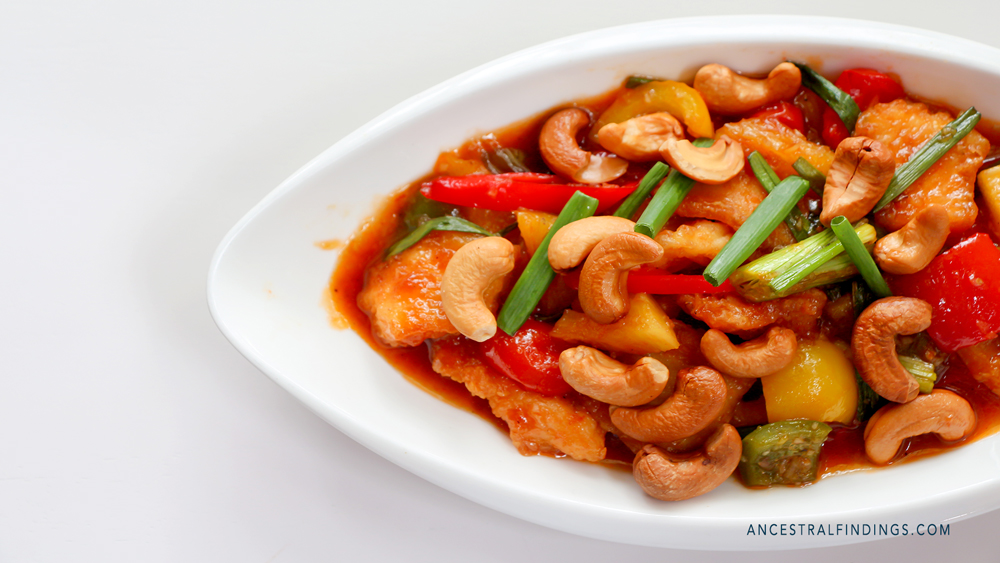Chinese food. It’s nearly impossible not to have heard of it or the typical dishes associated with it. From dumplings to spring rolls, Peking duck to Kung Pao chicken, many of us have settled down to these meals at restaurants or gotten them to go at food trucks. As with our tradition of being a cultural melting pot, since the times these cuisines arrived on our shores—brought by weary and rich immigrants alike—many have changed their names or even given rise to new kinds of cuisine. Chop suey, beef and broccoli, and crab rangoon (or crab puffs) are just a few of these foods. Even the beloved fortune cookie and the iconic paper carryout carton also have their histories rooted among Asian immigrants.
Today, let’s walk through the pages of history and cookbooks alike to see what General Tso’s chicken is all about. You might be surprised to learn that this dish wasn’t sweet originally—or even from China—but you’ll learn more as we go on a deeper dive.
A Closer Look at General Tso’s Chicken
It goes without saying that people are usually hungrier for food than genealogy, so let’s start with the recipe first. What are the key ingredients that make up this popular and delicious dish?
Well, boneless, skinless chicken thighs are the backbone (pun intended) for this dish. Breading for the chicken is made with egg, all-purpose flour, and cornstarch. But what really makes the taste that we all know is a careful mixture of soy sauce, rice wine, and chilies. After the chicken is ready, it is usually plated with crunchy broccoli and plain white rice to balance and enhance the various facets of its taste.
Who Is This General Tso and Why Does He Like Chicken?
Apart from reading about his name on a menu or a cookbook, many Americans—myself included—don’t know much about this man’s past. We’ve all probably stumbled on how to properly pronounce his name, which is often either pronounced phonetically as “Tso” or more like “So” without the T sound. The General’s real surname was actually “Zuo,” which is pronounced “zee-ooo-oou”, rather than the Tso that we call him.

As a renowned general of the Qing Dynasty, the last dynasty in China, Zuo Zongtang was famous for quelling large rebellions and unrest. Disgusted by the decadence of the government, he tried to improve China through Westernization across several aspects, such as the military and agriculture.
But what makes this dish’s origin special? The answer is delightfully mysterious and simple: General Zuo never ate the dish nor did he invent it. Zuo’s surviving descendants, when interviewed, gave no such recollection of ever hearing of such a dish, let alone having it served on the dinner table. Nor is the dish found in the capital of the man’s home province, Hunan, or his birthplace. By now, you’re probably wondering where this dish came from and why was it attributed to this general in particular.
So, Who’s Chicken Really?
As with lots of confusing origin stories bobbing around in the annals of history, many people have laid claim to the creation of General Tso’s Chicken. The strongest claim, however, comes from a Taiwanese chef called Peng Chang-kuei. After fleeing to Taiwan during the Chinese Civil War, he regained his title as the government’s official banquet chef until 1973, when he moved to New York. One thing that is important to understand is that many immigrant chefs who opened up their shops in the states found themselves altering dishes to adapt to the taste buds of those around them. Chef Peng was no different. His original creation of the dish relied on typical styles of Hunanese cuisine—heavy, sour, hot and salty—but that didn’t seem to interest the local New Yorkers. Therefore, Chef Peng decided to go for the signature taste that we Americans love best, and the flavor that made dish into a renowned hit: Sweetness.
Among other General Tso’s legends, another strong claim also originates from the Big Apple. Chef T. T. Wang, another Chinese immigrant cook, claims to have been the inventor of General Tso’s chicken a few years earlier than Chef Peng, though the name back then was “General Ching’s chicken.” This bit of history is murky because much is unknown about who this General Ching may be.

Variations of the Dish
As with many ancestral foods, there are lots of variations to General Tso’s chicken. If one of the following happens to number among your family’s recipes, then it may give you some clues as to its origins.
- Orange Chicken: Originating in Hawaii and closely associated with Panda Express, it uses orange or tangerine peel as its main defining flavor, sometimes in lieu of chilis, thus making the dish sweeter as opposed to being spicy.
- Sesame Chicken: Topped with generous helpings of sesame, the dish uses its namesake to create a sweet and extra crunchy texture.
- Sweet and Sour Chicken: While not fried like General Tso or other variants, this dish combines sugar and vinegar as one of its main sauce components. Sweet and sour sauce itself comes from China and is particularly prominent among Cantonese styles.
- Cashew Chicken: This one comes from Springfield, Missouri to grace our palates with a much more varied selection of vegetables to accompany the chicken. Common ingredients include cashews and green onions.

Of course, when making General Tso’s, there’s no hard rule dictating that you have to use fried chicken. It can be made much in the same way as sweet and sour chicken. Sherry can be drizzled in gently, along with citrus for extra tanginess to create a different flavor. Broccoli can be substituted for softer vegetables or other spicier ones to increase the spiciness of the recipe.
Because of the high prevalence of chicken in both American and Chinese cuisines, there are many spin-offs or variations of General’s Tso—or even separate dishes sharing only cultural roots or certain tastes, such as Kung Po chicken. Another fun fact, due to the popularity of General Tso’s chicken, the dish has crossed the seas back to its supposed birthplace, now actually supplementing the cuisine in China and appearing on traditional menus, even though in China, it isn’t actually “traditional.”
If homemade variations of General Tso’s chicken have made their way into your family cookbook or has been served fresh from your grandma’s kitchen, there’s a good chance that you have roots from the states in which these recipes were born, if not overseas. Dig through them and you might find more than than just knowing how to make a delicious dish. Although General Tso’s chicken is chock full of that chicken-y, spicy goodness, you’ll find that the genealogical history behind it is just as rich and full of interest as the dish itself.






